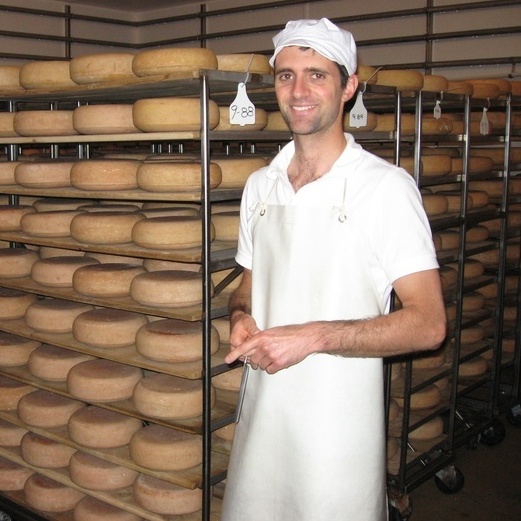A Preference of Credibility: Floridia Cheese Melbourne and Its Workmanship
A Preference of Credibility: Floridia Cheese Melbourne and Its Workmanship
Blog Article
Unlocking the Secrets of Artisanal Cheese Making: A Detailed Do It Yourself Overview
In the world of cooking workmanship, artisanal cheese making stands as a testimony to the fragile balance between custom and development. As we get started on this trip to demystify the art of developing charming cheeses, we are faced with a tapestry of keys and skills waiting to be unraveled.
Picking the Right Milk
When starting the trip of artisanal cheese production, the option of milk plays an important role in determining the high quality and attributes of the end product. The type of milk chosen affects the flavor, structure, and generally account of the cheese. Raw milk, directly from the animal, is chosen by numerous artisanal cheesemakers because of its special blend of enzymes, bacteria, and flavor compounds. Nevertheless, utilizing raw milk features policies and dangers, making sterilized milk a safer option for novices.
When choosing milk for cheese production, it is crucial to think about the fat content. Greater fat material in milk can lead to a creamier and richer cheese, while lower fat web content may lead to a drier and stronger texture. Additionally, the source of the milk, whether from cows, goats, lamb, or buffalo, contributes unique flavors and features to the cheese (Floridia Cheese Melbourne). Each type of milk brings its very own subtleties, enabling for a wide variety of cheese selections to be crafted based upon the selected milk. Inevitably, the option of milk is a fundamental decision that sets the foundation for a successful artisanal cheese-making venture.
Culturing and Coagulating
To initiate the cheese-making process, the critical actions of culturing and coagulating should be carefully implemented to transform milk into curds and whey. The type of culture made use of can dramatically influence the taste, structure, and ripening of the final cheese product.

The timing and temperature level control throughout culturing and coagulation are essential variables that affect the final result of celebrity. Correct implementation of these actions is necessary to make certain the wanted structure, flavor, and consistency of the artisanal cheese being produced.
Draining and Pressing Curds
After the milk proteins have actually coagulated and the curds have been cut to launch whey, the next important action in artisanal cheese making involves draining pipes and pushing the curds to achieve the preferred appearance and consistency of the final cheese item. The time for draining pipes can differ depending on the type of cheese being made and the preferred dampness content.
Pushing assists get rid of any type of remaining whey and compacts the curds to develop a strong cheese wheel. Appropriate pressing and draining are vital actions that substantially influence the top quality and qualities of the artisanal cheese being generated.
Aging and Flavor Strategies
Carrying out careful aging and flavor methods is critical in enhancing the depth and intricacy of artisanal cheeses, raising their preference profiles to splendid levels of improvement and class. Aging plays a crucial role in developing the distinct flavors and textures that distinguish artisanal cheeses. Throughout the aging process, cheeses are saved in thoroughly regulated settings where factors such as moisture, temperature level, and airflow are manipulated to encourage the development of beneficial mold and mildews and germs. This regulated setting allows the cheese to mature slowly, creating complicated scents and abundant tastes.
Seasoning techniques likewise add substantially to the last taste of artisanal cheeses. Cheesemakers may pick to introduce extra tastes by integrating ingredients such as natural herbs, spices, and even fruits right into the cheese throughout the production process. In addition, some cheeses are cleaned or rubbed with different liquids, such as salt water or alcohol, to enhance their textures and tastes.
Covering and Storing Cheeses

Conclusion
Finally, mastering the art of artisanal cheese making includes carefully selecting the appropriate milk, complying with specific culturing and coagulating processes, draining pipes and pressing curds successfully, and utilizing different aging and flavor methods. By adhering to these steps carefully and with focus to detail, you can produce your very own delicious and special cheeses at home. Keep in mind to cover and keep your cheeses properly to guarantee optimal taste and structure development. Satisfied cheese making!
Each kind of milk brings its own subtleties, permitting for a broad range of cheese varieties to be crafted based on the picked milk.After the milk proteins have actually coagulated and the curds have been reduced to release whey, the following critical step in artisanal cheese making involves draining and pushing the curds to achieve the wanted appearance and uniformity of the final cheese that site item. Most cheeses ought to be wrapped in wax paper or cheese paper to enable them to breathe while shielding them from drying out. For cheeses that require to continue aging, such as bloomy rinds or cleaned peels, ensure they are stored in an amazing environment like a cheese cave or a refrigerator established to the appropriate temperature. By paying attention to the wrapping and storage of artisanal cheeses, cheese makers and fanatics can protect the honesty of these delicacies and totally enjoy their complicated tastes.
Report this page